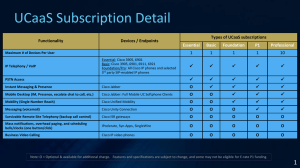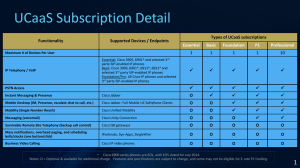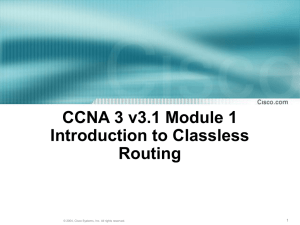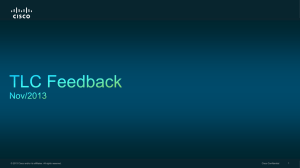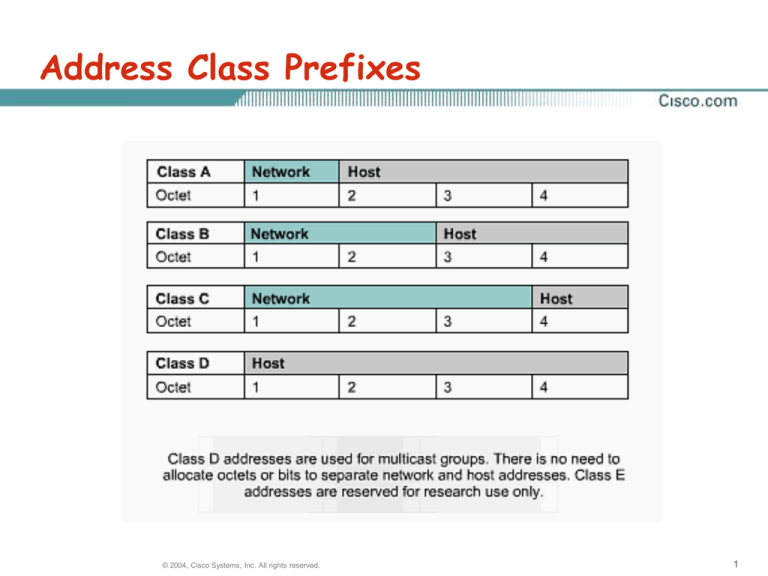
Address Class Prefixes
© 2004, Cisco Systems, Inc. All rights reserved.
1
Network and Host Division
© 2004, Cisco Systems, Inc. All rights reserved.
2
Class A Address
© 2004, Cisco Systems, Inc. All rights reserved.
3
Class B Address
© 2004, Cisco Systems, Inc. All rights reserved.
4
Class C Address
© 2004, Cisco Systems, Inc. All rights reserved.
5
Class D Address Architecture
© 2004, Cisco Systems, Inc. All rights reserved.
6
Class E Address Architecture
© 2004, Cisco Systems, Inc. All rights reserved.
7
IP Address Range
© 2004, Cisco Systems, Inc. All rights reserved.
8
Network Address
© 2004, Cisco Systems, Inc. All rights reserved.
9
Broadcast Address
© 2004, Cisco Systems, Inc. All rights reserved.
10
Network Address
© 2004, Cisco Systems, Inc. All rights reserved.
11
Unicast Transmission
© 2004, Cisco Systems, Inc. All rights reserved.
12
Broadcast Address
© 2004, Cisco Systems, Inc. All rights reserved.
13
Broadcast Transmission
© 2004, Cisco Systems, Inc. All rights reserved.
14
Required Unique Address
© 2004, Cisco Systems, Inc. All rights reserved.
15
Private IP Addresses
© 2004, Cisco Systems, Inc. All rights reserved.
16
IPv4 Address Allocation
© 2004, Cisco Systems, Inc. All rights reserved.
17
IPv4 and IPv6
© 2004, Cisco Systems, Inc. All rights reserved.
18
IPv4 and IPv6 Addresses
© 2004, Cisco Systems, Inc. All rights reserved.
19
Subdividing the Host Octets of a Class C
Address
© 2004, Cisco Systems, Inc. All rights reserved.
20
Subdividing the Host Octets of a Class B
Address
© 2004, Cisco Systems, Inc. All rights reserved.
21
Subdividing the Host Octets of a Class A
Address
© 2004, Cisco Systems, Inc. All rights reserved.
22
Subnetting Chart (Bit Position and Value)
© 2004, Cisco Systems, Inc. All rights reserved.
23
Subnetting Chart (Subnet Mask Identifier)
© 2004, Cisco Systems, Inc. All rights reserved.
24
Subnetting
© 2004, Cisco Systems, Inc. All rights reserved.
25
Subnetting Chart
© 2004, Cisco Systems, Inc. All rights reserved.
26
Subnetting Scheme
© 2004, Cisco Systems, Inc. All rights reserved.
27
Subnetting Chart
© 2004, Cisco Systems, Inc. All rights reserved.
28
Subdividing the Host Octets of a Class B
Network
© 2004, Cisco Systems, Inc. All rights reserved.
29
Subdividing the Host Octets of a Class A
Network
© 2004, Cisco Systems, Inc. All rights reserved.
30
Subnetting
© 2004, Cisco Systems, Inc. All rights reserved.
31
Data Encapsulation
© 2004, Cisco Systems, Inc. All rights reserved.
32
Routing
© 2004, Cisco Systems, Inc. All rights reserved.
33
Network Layer Devices in Data Flow
© 2004, Cisco Systems, Inc. All rights reserved.
34
Router Protocol Stripping
© 2004, Cisco Systems, Inc. All rights reserved.
35
Connectionless Network Services
© 2004, Cisco Systems, Inc. All rights reserved.
36
Network Layer Fields
© 2004, Cisco Systems, Inc. All rights reserved.
37
The Network Layer
© 2004, Cisco Systems, Inc. All rights reserved.
38
The Network Layer
© 2004, Cisco Systems, Inc. All rights reserved.
39
Layer 2 Switching and Layer 3 Routing
© 2004, Cisco Systems, Inc. All rights reserved.
40
ARP Tables and Routing Tables
© 2004, Cisco Systems, Inc. All rights reserved.
41
Router and Switch Features Comparison
© 2004, Cisco Systems, Inc. All rights reserved.
42
Routed Protocol
© 2004, Cisco Systems, Inc. All rights reserved.
43
Routing Protocol
© 2004, Cisco Systems, Inc. All rights reserved.
44
Path Determination
© 2004, Cisco Systems, Inc. All rights reserved.
45
The Routing Process
© 2004, Cisco Systems, Inc. All rights reserved.
46
Routing Tables
© 2004, Cisco Systems, Inc. All rights reserved.
47
Routing Algorithms and Metrics
© 2004, Cisco Systems, Inc. All rights reserved.
48
Autonomous Systems
© 2004, Cisco Systems, Inc. All rights reserved.
49
Interior and Exterior Gateway Protocols
© 2004, Cisco Systems, Inc. All rights reserved.
50
Routing Protocols
© 2004, Cisco Systems, Inc. All rights reserved.
51
Classes of Routing Protocols
© 2004, Cisco Systems, Inc. All rights reserved.
52
Distance Vector Concepts
© 2004, Cisco Systems, Inc. All rights reserved.
53
Distance Vector Network Discovery
© 2004, Cisco Systems, Inc. All rights reserved.
54
Operation Distance Vector Routing Protocols
• Each node (router or host) exchange information with neighboring
nodes. Neighbors are both directly connected to same network
• Node maintains vector of link costs for each directly attached
network and distance and next-hop vectors for each destination
• Used by Routing Information Protocol (RIP)
• Requires transmission of lots of information by each router
Distance vector to all neighbors
Contains estimated path cost to all networks in configuration
Changes take long time to propagate
© 2004, Cisco Systems, Inc. All rights reserved.
55
Example on RIP Routing
© 2004, Cisco Systems, Inc. All rights reserved.
56
Concept of Distance Vector Routing
© 2004, Cisco Systems, Inc. All rights reserved.
57
Distance Vector Routing Table
© 2004, Cisco Systems, Inc. All rights reserved.
58
Routing Table Initial States
© 2004, Cisco Systems, Inc. All rights reserved.
59
Updating Routing Table for Router A
© 2004, Cisco Systems, Inc. All rights reserved.
60
Final Routing Tables
© 2004, Cisco Systems, Inc. All rights reserved.
61
Another Example on RIP Operation
• All nodes of the graph represent Routers.
• In this example, router A receives the routing
tables of its neighboring routers: A,I,H,K
• Router A computes its routing table based on
the tables of its neighbors plus the delays it has with each of the four
routers( JA: 8, JI: 10, JH: 12, JK: 6)
© 2004, Cisco Systems, Inc. All rights reserved.
62
Link-State Concepts
© 2004, Cisco Systems, Inc. All rights reserved.
63
Link-State Network Discovery
© 2004, Cisco Systems, Inc. All rights reserved.
64
Link-State Topology Changes
© 2004, Cisco Systems, Inc. All rights reserved.
65
Link-State Concerns
© 2004, Cisco Systems, Inc. All rights reserved.
66
Link State Routing Protocols:
Open Shortest Path First (OSPF)
• Replace Routing Information Protocol (RIP)
• Uses link state routing strategy
Each router keeps list of state of local links to network
Transmits update state information to all other routers
Little traffic as messages are small and not sent often
• Route computed on least cost based on user cost metric
© 2004, Cisco Systems, Inc. All rights reserved.
67
Example on OSPF Routing
© 2004, Cisco Systems, Inc. All rights reserved.
68
Concept of Link State Routing
© 2004, Cisco Systems, Inc. All rights reserved.
69
Cost in Link State Routing
© 2004, Cisco Systems, Inc. All rights reserved.
70
Link State Advertisement Packet Format
© 2004, Cisco Systems, Inc. All rights reserved.
71
Flooding of A’s Link State Advertisement
Packets
© 2004, Cisco Systems, Inc. All rights reserved.
72
Link State Topological Database
© 2004, Cisco Systems, Inc. All rights reserved.
73
Routing Table for Router A
© 2004, Cisco Systems, Inc. All rights reserved.
74
Dijkistra Algorithm ((لالطالع فقط
1. Start with the local node (router): the root
of the tree.
2. Assign a cost of 0 to this node and make it
the first permanent node.
3. Examine each neighbor node of the node that
was the last permanent node.
4. Assign a cumulative cost to each node and make
it tentative.
5. Among the list of tentative nodes
5.1. Find the node with the smallest cumulative
cost and make it permanent.
5.2. If a node can be reached from more than
one direction
5.2.1. Select the direction with the shortest
cumulative cost.
6. Repeat steps 3 to 5 until every node becomes
permanent.
© 2004, Cisco Systems, Inc. All rights reserved.
75
Comparison Between Link-State and
Distance Vector Routing
© 2004, Cisco Systems, Inc. All rights reserved.
76
Summary
© 2004, Cisco Systems, Inc. All rights reserved.
77




